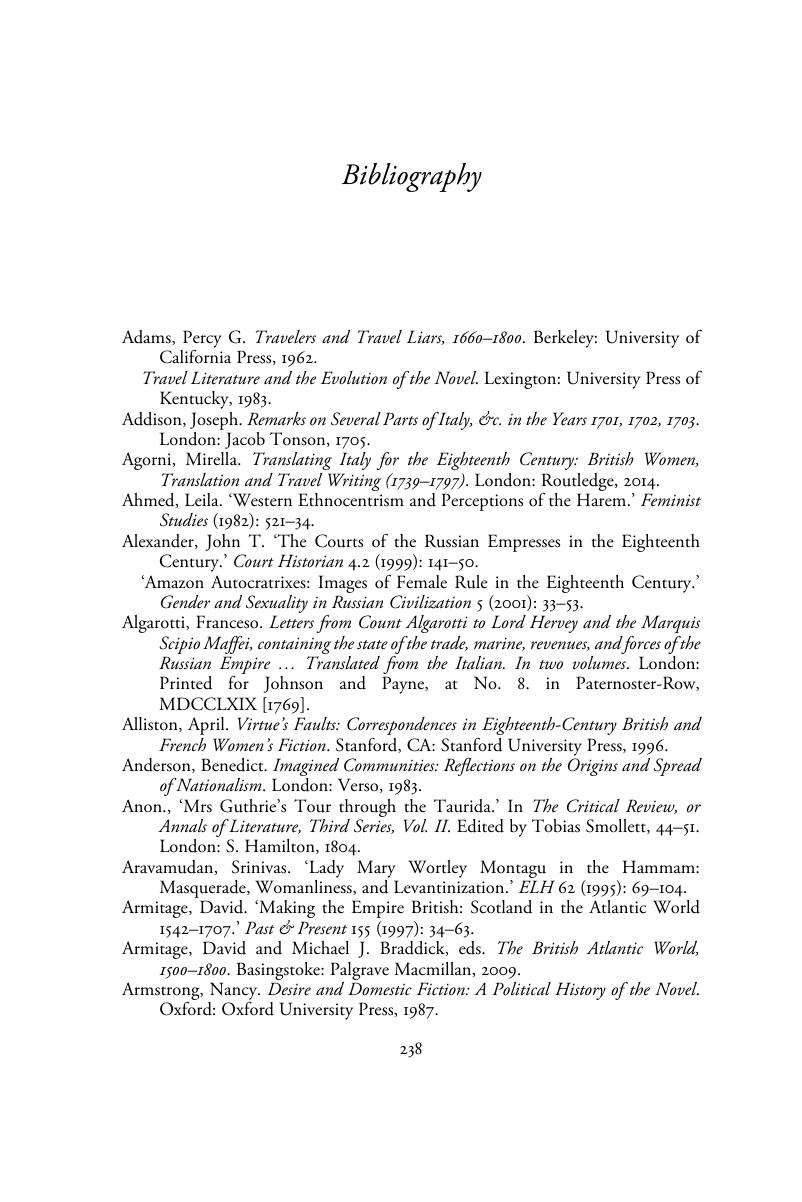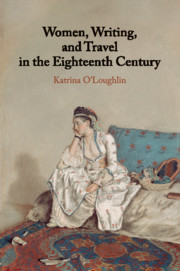Book contents
- Women, Writing, and Travel in the Eighteenth Century
- Women, Writing, and Travel in the Eighteenth Century
- Copyright page
- Contents
- Acknowledgements
- Note on the Text
- Introduction ‘The paper globe’
- Chapter 1 ‘A very diligent curiosity’
- Chapter 2 ‘Wrecked on seas of ink’
- Chapter 3 ‘Entre Nous’
- Chapter 4 ‘No small Wonder to see myself in Print’
- Chapter 5 ‘My travels have been to the moon and the stars’
- Chapter 6 ‘Thorns and Thistles’
- Conclusion La ‘Dame Pensive’
- Bibliography
- Index
- References
Bibliography
Published online by Cambridge University Press: 08 June 2018
- Women, Writing, and Travel in the Eighteenth Century
- Women, Writing, and Travel in the Eighteenth Century
- Copyright page
- Contents
- Acknowledgements
- Note on the Text
- Introduction ‘The paper globe’
- Chapter 1 ‘A very diligent curiosity’
- Chapter 2 ‘Wrecked on seas of ink’
- Chapter 3 ‘Entre Nous’
- Chapter 4 ‘No small Wonder to see myself in Print’
- Chapter 5 ‘My travels have been to the moon and the stars’
- Chapter 6 ‘Thorns and Thistles’
- Conclusion La ‘Dame Pensive’
- Bibliography
- Index
- References
Summary

- Type
- Chapter
- Information
- Women, Writing, and Travel in the Eighteenth Century , pp. 238 - 273Publisher: Cambridge University PressPrint publication year: 2018



